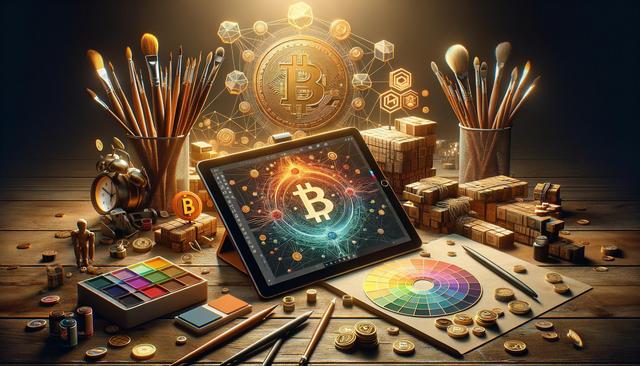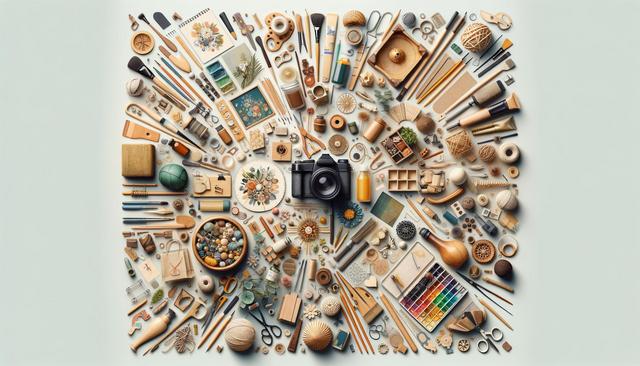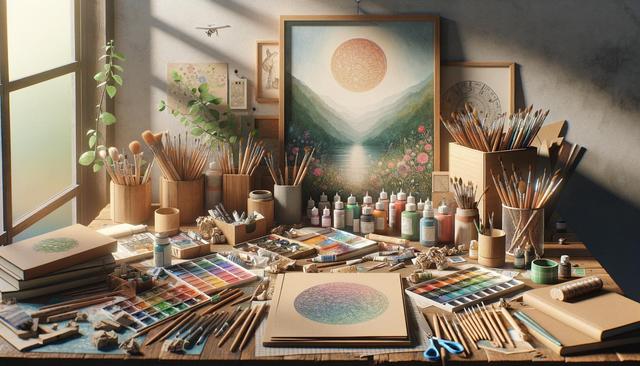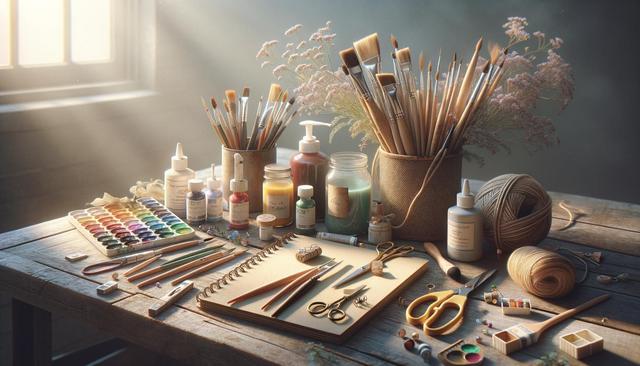NFT Art Explained: How Artists Are Leveraging Blockchain Technology
In the realm of fine arts and digital design, NFT art is a burgeoning phenomenon that is reshaping how artists interact with their work and audiences.

The Intersection of Art and Technology
The fusion of art and technology is not a novel concept, but the advent of NFT art has introduced a groundbreaking method for artists to showcase and monetize their creations. Non-Fungible Tokens, or NFTs, are unique digital assets verified using blockchain technology. This technology ensures the authenticity and ownership of digital art, allowing artists to sell their work in a manner akin to traditional art sales. The integration of blockchain technology in the fine arts sector provides a transparent and secure platform that benefits both artists and collectors. Artists can now retain a greater share of their profits without the need for intermediaries such as galleries or auction houses. Additionally, the potential for earning royalties on secondary sales further incentivizes artists to delve into digital design.
How NFTs Empower Artists
For artists, NFTs represent not just a new medium but also a new economic model. The ability to create and sell digital art directly to collectors allows artists more control over their work and its distribution. This empowerment extends beyond financial aspects, as it opens a global marketplace where artists can connect with buyers worldwide without geographical constraints. Moreover, NFTs enable artists to explore innovative art forms, including animated pieces, interactive installations, and virtual reality experiences, expanding the boundaries of what art can be. By harnessing blockchain technology, artists can authenticate their work, creating a digital certificate of authenticity that assures buyers of the piece’s originality.
Challenges and Considerations
Despite the advantages, the NFT art landscape is not without its challenges. Artists venturing into this space must navigate technical complexities and market volatility. The environmental impact of blockchain technology, particularly the energy consumption associated with cryptocurrency mining, is a significant concern. Artists must weigh these environmental considerations against the benefits of using NFTs. Furthermore, the market’s speculative nature can lead to price fluctuations that may not accurately reflect the intrinsic value of the art. Thus, artists need to approach NFT creation with a strategic mindset, ensuring they maintain artistic integrity while adapting to this new model.
Case Studies of NFT Success
Many artists have already achieved remarkable success with NFTs, showcasing the potential of this digital frontier. Several renowned artists have embraced NFTs to auction their digital pieces, fetching substantial sums and attracting media attention. These case studies highlight the diverse ways artists can leverage NFTs to enhance their visibility and financial success. Artists have used NFTs to release exclusive digital collections, collaborate with other creators, and engage with their audience in novel ways. These success stories demonstrate the transformative impact of NFTs on an artist’s career, offering inspiration and insight to those considering entering the NFT space.
The Future of NFT Art
Looking ahead, the future of NFT art is teeming with possibilities. As technology evolves, so will the ways artists can express their creativity through digital means. The NFT market is expected to mature, with more platforms emerging to support artists and collectors alike. Innovations in blockchain technology may address current environmental concerns, making NFTs a more sustainable option. The continued integration of NFTs in the art world will likely lead to broader acceptance and understanding of digital art as a legitimate form, further blurring the lines between traditional and digital media. Artists who embrace these changes will find themselves at the forefront of a new era in art, where creativity and technology converge to create unparalleled opportunities.
Conclusion
In conclusion, NFT art offers artists a unique opportunity to engage with digital design in innovative ways. By leveraging blockchain technology, artists can ensure the authenticity and ownership of their work, creating a new economic model that benefits creators and collectors alike. While challenges remain, particularly in terms of environmental impact and market volatility, the potential rewards for artists are significant. As the NFT market continues to evolve, artists who adapt and embrace this digital frontier stand to gain not only financial success but also greater creative freedom and global reach. The intersection of fine arts and technology promises an exciting future, with NFTs playing a pivotal role in shaping the art world of tomorrow.





